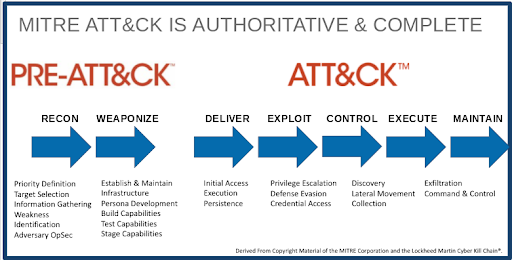Overcoming challenges is one key to success in business–and technology challenges are no exception. For years the modern economy relied on well-crafted IT infrastructure to keep its operations up and running. But when things go wrong, and they do, it doesn’t take much to grind everything to a halt. I remember a few years ago when (working in the field during a significant telco work stoppage) and witnessed first-hand how something as simple as a rainstorm could take a branch office location of a bank or retail outlet down for hours and render every IP-enabled device useless until network connectivity was restored. Many of these locations were already connected to the cloud–even through VoIP telephony. More recently, the IT response to COVID-19 rapidly introduced years of change in the way companies in all sectors and regions do business. The hybrid workplace—where employees move among on-site, home and work-from-anywhere locations—is here to stay. According to a recent McKinsey Global Survey of executives, companies have accelerated the digitization of their customer and supply-chain interactions and their internal operations by three to four years. The share of digital or digitally enabled products in their portfolios has accelerated by a shocking seven years. But still, companies face significant headwinds in achieving their goals from staffing, skills shortages, and the seemingly ubiquitous (and growing) cybersecurity risks.
Good News for MSPs
The good news for managed service providers (MSPs) is that the managed services market size is expanding to meet these challenges. The rise in IT spending by enterprises and small and medium-sized enterprises (SMEs) will fuel the demand for MSPs as these organizations adopt cloud, automate services, and explore advanced digital technologies. According to Grand View Research, the global managed services market size was valued at $239.71 billion in 2021 and is expected to expand at a compound annual growth rate (CAGR) of 13.4% from 2022 to 2030. While they attributed much of this growth to the need for automation as businesses aggressively shifted to remote working, other trends are expected to create enormous growth opportunities for managed service providers in the short and long term.
- SD-WAN is experiencing explosive growth among mid-sized and large enterprises. The adoption of cloud-based applications is increasing network traffic, and SD-WAN provides better cloud connectivity than legacy options. This is excellent news for MSPs since many enterprises and SMEs are seek managed SD-WAN solutions. According to Markets and Markets, the global SD-WAN market size will grow from USD 1.9 billion in 2020 to USD 8.4 billion by 2025, at a Compound Annual Growth Rate (CAGR) of 34.5% during the forecast period.
- Many employees are now working from home even as the effects of the pandemic subside. Companies had little time to prepare for such large-scale remote work and secure devices regularly accessing corporate resources outside the perimeter. Since the pandemic’s outbreak, security risks have multiplied as employees work remotely and business partners and customers rely on electronic communication. According to an IDG report commissioned by NTT Ltd., nearly 55% of companies are approaching managed service providers to choose value-added services and reduce security risks.
The Managed Services “Gap”
From Tier 1 telecommunications providers, IT services companies, and regional IT solutions specialists – there is no shortage of skilled MSP resources and capabilities that can span IT services, networking, cloud, and cybersecurity to assist enterprises large and small. But there’s often a gap in MSP offerings that easily goes unnoticed: core network services. This is DNS, DHCP, and IP Address Management (DDI). These are core services that run the Internet. They are central to enterprise investments into initiatives such as deploying hybrid clouds, expanding security focus, implementing IoT, and rolling out comprehensive digital economy solutions. I like to think of DDI as the plumbing in a house. No one worries about it until there’s a problem. As the world accelerates to the cloud, introducing new complexities and the massive volume of devices can slow everything down. Further, the now blistering pace of digital transformation is increasing the burden on already thinly stretched security teams and perimeter defenses – reshaping how we need to think about cybersecurity. Customers need solutions that afford them greater agility, security, automation, and cost-efficiency in today’s hybrid, multi-cloud world.
Mobile devices, IoT and other solutions require more performance, reliability, and higher expectations on the network. But you need that plumbing to facilitate IT, and it’s interesting how DDI can factor into existing MSP offerings. Does this sound familiar?
- Network Availability. Remember initially when I mentioned how the weather could take an office down for hours? Organizations can have thousands of locations or sites that require reliable and secure local Internet, data center, and cloud connectivity. They may be using routers for DCHP or Windows Server or Linux/BIND for DNS or are backhauling DNS/DHCP to the data centers to save costs. They may also use SD-WAN or SD-Branch to connect sites to the data center or cloud. Lots of things can go wrong. Legacy hub-and-spoke DDI solutions are harder to manage as operations grow increasingly distributed. If local branches can be directed to the cloud, or locally connected devices can still get an IP address to work locally, that can take the load off the MSP managing the network.
- Network Security. Here’s an interesting aspect of DDI. Having staff working from home and in remote offices increases the risk of their laptops/ servers being breached by hackers. Standalone systems or devices (such as IoT devices and POS systems) are IP enabled, and many businesses do not know what they are doing on the network or where they are connected. From our experience working with enterprises and helping them secure their operations, the DNS channel is the most exploited in their IT environment. In fact, 91% of breaches in organizations utilize DNS. This is because DNS is not tightly monitored nor restricted due to it being open for devices to access internal and external domains. DNS protection can form the FIRST line of defense against cyber-attacks, particularly for your work-from-home users, IoT devices and cloud platforms. Also, suppose you are running a security team. The rich telemetry you can obtain from our DDI platform will provide valuable contextual information to existing security solutions and thus strengthen existing investments.
Infoblox Offerings to Cost-Effectively Close the Managed Secure DDI Gap
We’ve been engineering game-changing solutions for core network services and security for more than two decades. MSPs can accelerate success with complimentary managed service offerings employing Infoblox capabilities from the data center to the cloud. Adding a competitively differentiated managed secure DDI offering helps MSPs add profitable revenue while decreasing churn. With Infoblox, when ISPs go down or connections fail, your customers can continue operating with the internal infrastructure, and business continues as usual. When an HQ or major branch offices go down, only those locations are affected, and all other branch locations continue to operate as if nothing occurred. That’s a great compliment to a managed SD-WAN service.
Whether MSPs want to integrate secure DDI capabilities as part of an existing bundled offer or provide a standalone option, Infoblox can help.
Are you an MSP interested in learning more about the DDI gap? Let me know – I’d love to learn more and discuss!








